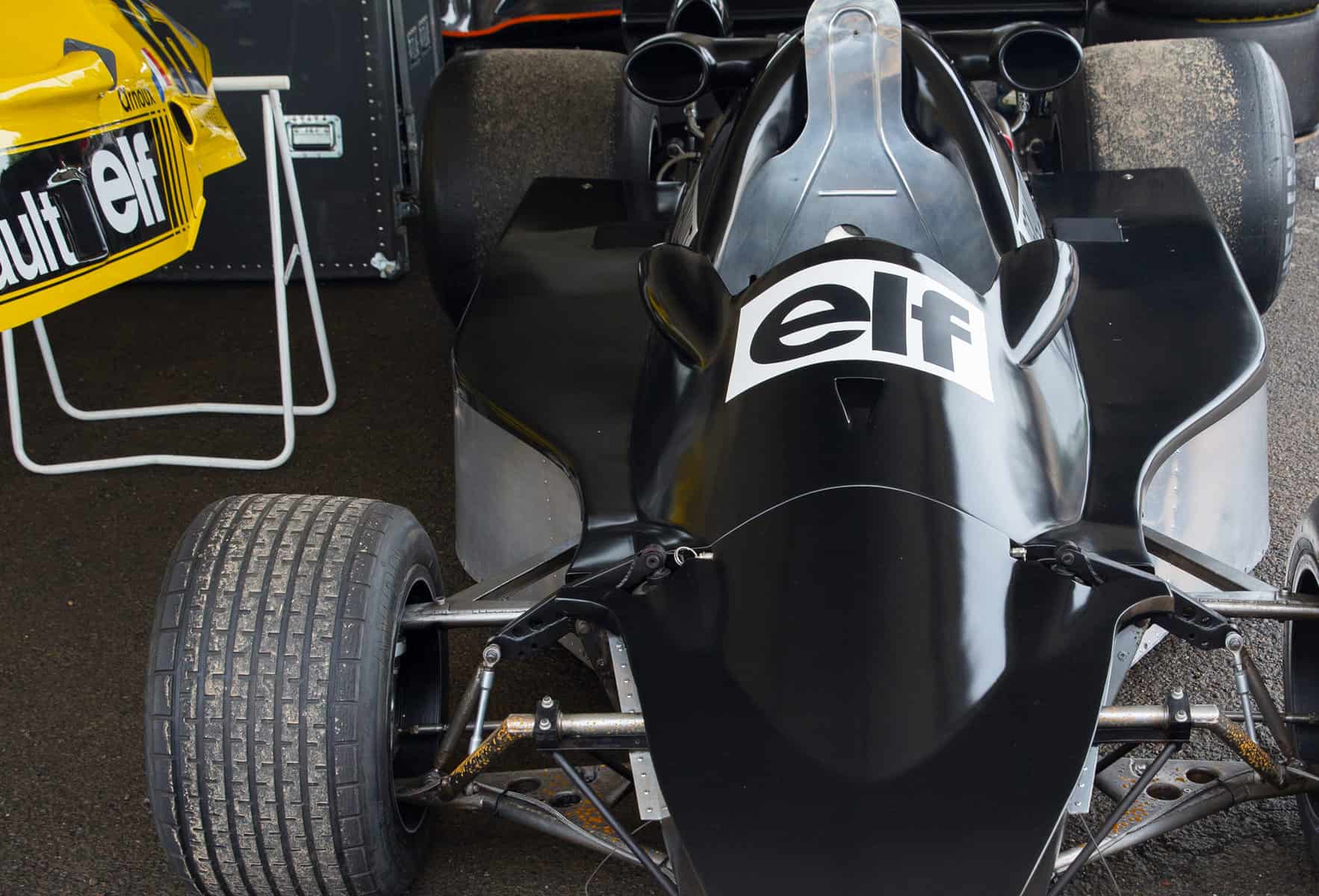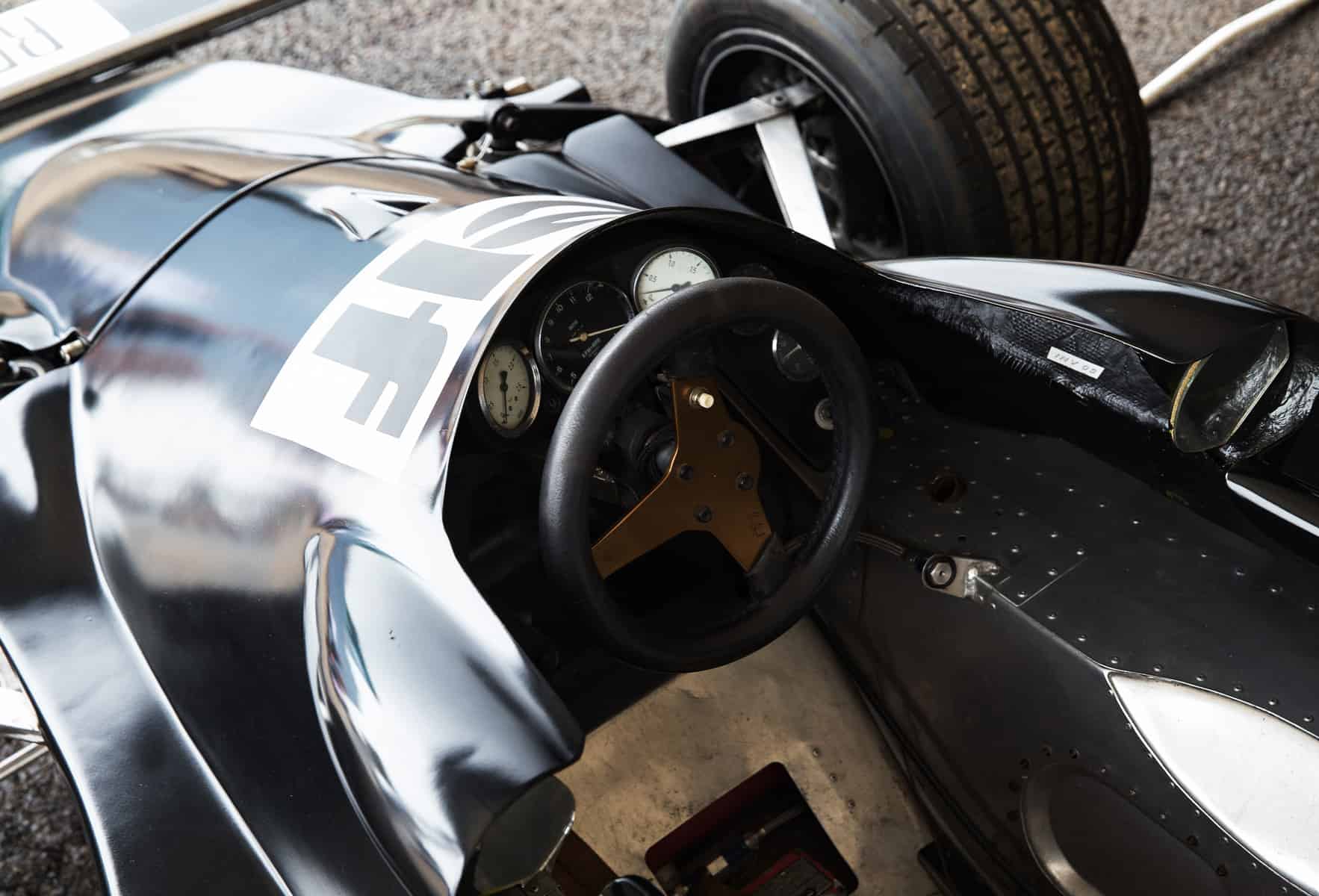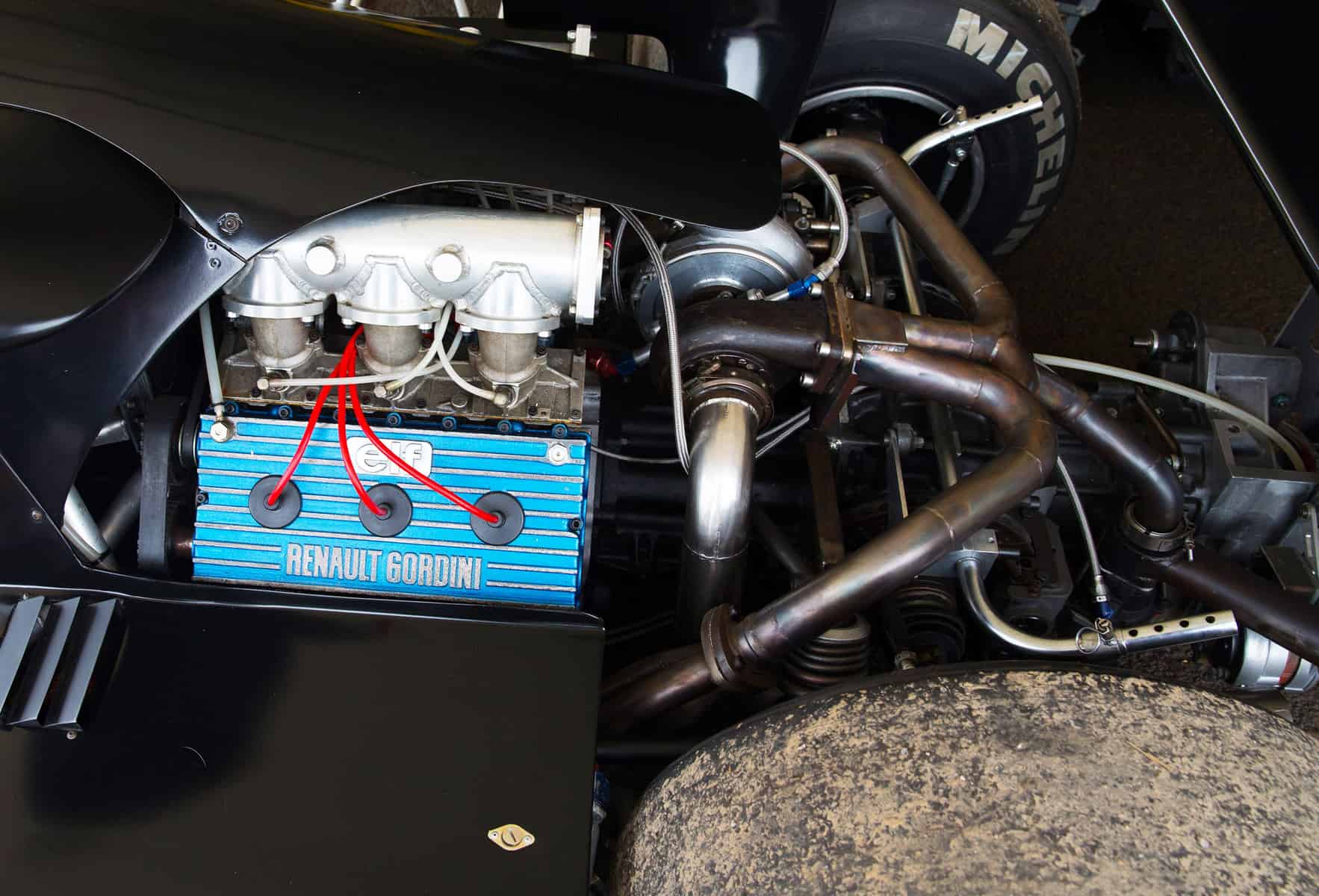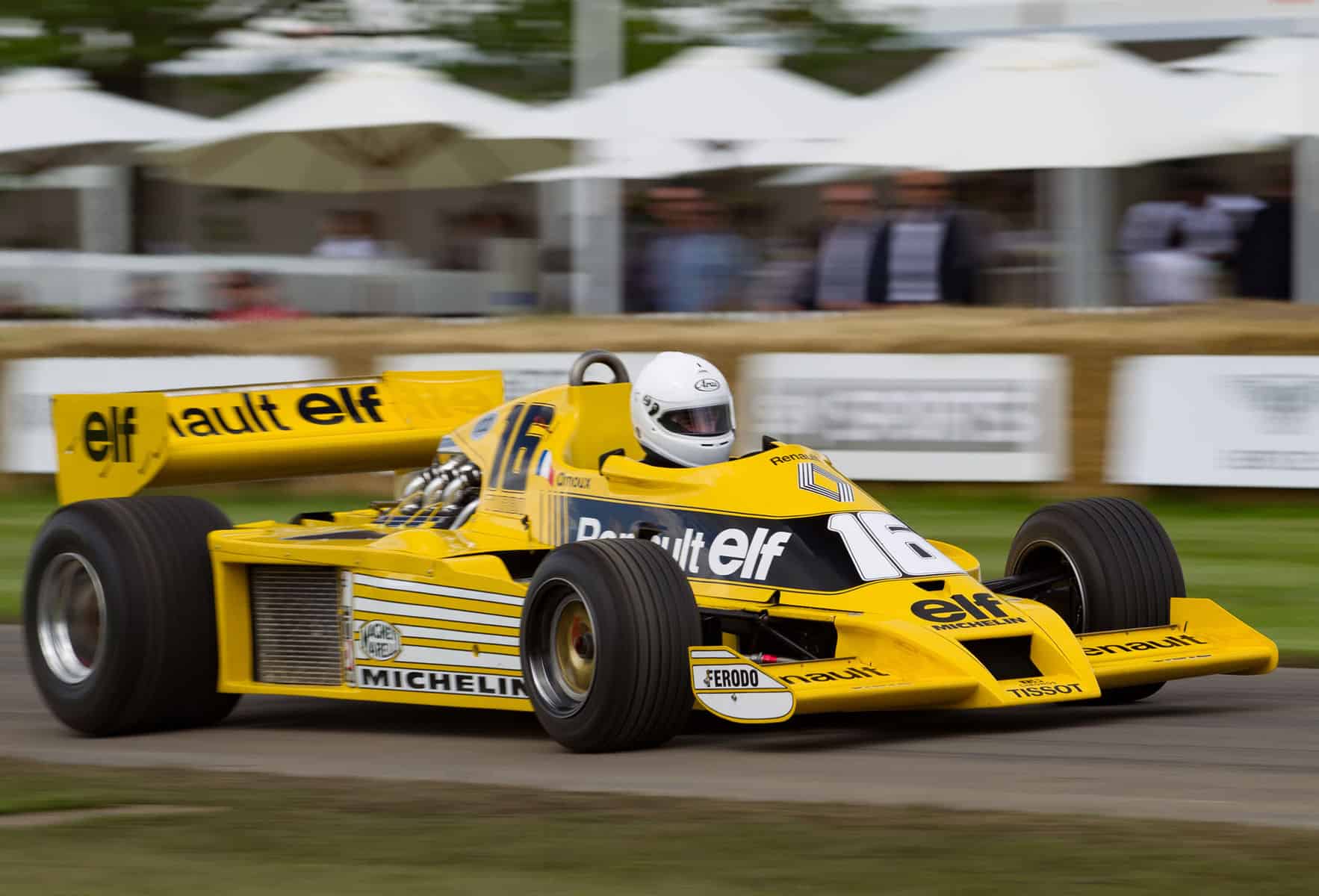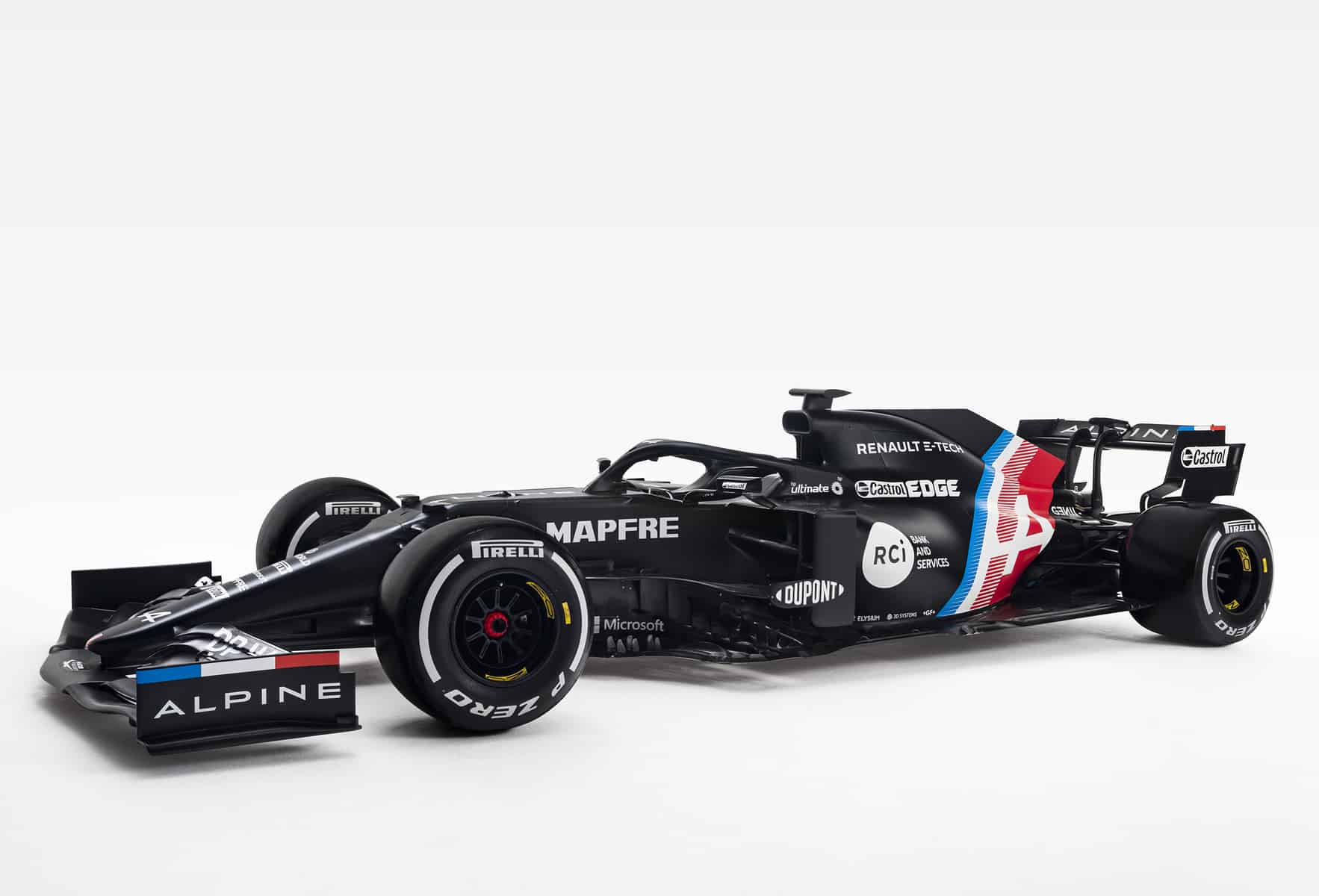Alpine is Revived
Renault gives an old mark a fresh start
BY: WOUTER MELISSEN
A new name will arrive on the Formula 1 grid this season: Alpine. This is the new name adopted by the team owned by and raced as Renault during the last few years. Acquired by Renault back in 1973, Alpine has recently been revived and serves as the French company’s sports car subsidiary.
Although no Alpine Formula 1 car has actually started a race yet, the 2021 Grand Prix racer will in fact be the third Formula 1 car to sport the Alpine name.
The first one was produced and even tested in 1968 but it was set aside as it reportedly was built without the consent of Alpine founder and owner Jean Redelé. More significant was the Alpine A500 that was assembled in 1975 and 1976 at the specialist company’s Dieppe headquarters. Commonly referred to as the Laboratoire or Laboratory, it would be the precursor, in spirit, of Renault’s subsequent Formula 1 effort that will continue in 2021 under the Alpine name.
Alpine had competed in single-seater races but mainly in the F2 and F3 classes with Renault-engined machinery. This effort had come to an end shortly after Renault acquired the specialist manufacturer in 1973. Under the new ownership, the sports car program did continue. In 1974, Alain Serpaggi drove the Alpine A441 to the European 2-Litre Sports Prototype Championship. It was powered by a two-liter V6, which had been developed by another Renault subsidiary, Gordini. Designed by François Castaing, the all-alloy engine featured twin overhead camshafts and four valves per cylinder.
Building on the success of the 1974 season, Alpine, Renault, and Gordini stepped up to the three-liter class, which would bring an outright win at the blue riband Le Mans race within grasps. This was achieved not by enlarging the V6 but by adding a turbocharger. The sports-car regulations at the time used a 1.4 equivalency factor to allow forced induction and naturally aspirated engines to compete in the same class. This meant that the turbocharged two-liter engine qualified in the three-liter category with ease.
There was little experience in Europe with the use of the proposed exhaust-driven turbos. To get a better understanding of the technology, Renault-Gordini dispatched engineer Bernard Dudot, who already had some experience, to the United States. Here turbos had been used in Indy Car racing since the late 1960s and Porsche had famously dominated the 1972 and 1973 Can-Am seasons with their mighty twin-turbocharged flat-12 engines. Upon his return from the United States, Dudot was tasked with creating what would be known as the CHS engine.

At Gordini’s Viry-Chatillon engine facility, work got under way to add a single Garrett turbocharger to the existing two-liter engine. As was common practice in Indy Car racing, it was mounted behind the engine, on top of the bell-housing. Even running at a relatively modest boost level to ensure longevity, the performance figures of the new engine were impressive. Adding the turbo resulted quite literally in a power boost of nearly 200 hp, up from 305 hp to a highly competitive 500 hp.
Impressed by the power produced by the turbocharged, two-liter engine, Gordini’s engineers set their sights even higher: Formula 1. The regulations in effect throughout the 1970s also allowed for turbocharged engines, but no manufacturer had tried to build a Formula 1 with forced induction for several decades. Instead, the complete field used three-liter, naturally aspirated engines with either eight or twelve cylinders. Clearly recognizing the potential of forced induction, the limit for these engines had been set at just one-and-a-half liters, which may explain why no one had explored this avenue.
One of the principal backers of Renault and Alpine’s motorsport efforts was oil and lubricant manufacturer Elf. The French company also sponsored the Tyrrell Formula 1 team. At this early stage of development, Elf brought Renault and Ken Tyrrell together. The team owner was interested in potentially running the engine in the back of his cars. He also encouraged the continued development of the turbo engine as he believed that this unique approach would be Renault’s only viable option to take on seasoned engine builders like Cosworth and Ferrari.
In great secrecy, the first V6 engines were built by reducing the bore and stroke to get the displacement down to 1,495 cc. Retained were the four-valve heads, which featured a pair of belt-driven camshafts each. As on the CHS sports car engine, the turbo was mounted aft of the V6. The turbine on the right-hand side of the turbo was driven from the rear by the exhausts from both banks, through an elaborate set of pipes. The second turbine then fed compressed fresh air, supplied by a huge scoop, to the front of the engine, where an intercooler was mounted to cool down the air. Once cooled, the compressed air then arrived in two intake plenums, one for each cylinder bank.
Compared with the very clean Cosworth DFV V8 used by most other teams, the new Renault-Gordini engine looked very complicated. The additional ancillaries served their purpose, as the tiny V6 was rated at 502 hp at 10,500 rpm by the end of the extensive bench tests conducted throughout 1975. It also produced a hefty 363 Nm of torque, which was comparable to the figures of the DFV even at this early stage of development. As a nod to the crucial project backer Elf and lubricant supplier, the new engine was officially dubbed the Renault-Gordini EF1.
While the development of the turbocharged sports-car engine was well publicized, the creation of a Renault Grand Prix engine was kept well under wraps. An actual entry into Formula 1 was most definitely not signed off on and the project initially served mainly to prove the concept. Once this had been achieved on the Gordini test bench, an actual car had to be built to see how it would perform in real life. With Tyrrell preoccupied with the development of the P34 six-wheeler, the team had no resources for an elaborate testing program. Instead, Alpine was commissioned to build a new single seater to serve as a test bed for the Formula 1 engine.
The A500 was designed by André de Cortanze, who had also been responsible for the earlier Alpine single seaters. Interestingly, he received assistance from one of the works drivers, Jean-Pierre Jabouille, who proved as adept behind the drawing board as he was fast behind the wheel of a racing car. They created what was Alpine’s first proper aluminum monocoque. Some corners were cut by basing the suspension on what was used for the existing A442 sports car. Another off-the-shelf component was the five-speed Hewland gearbox.
To keep the project under wraps, Alpine was helped by the fact that the naturally aspirated V6 was eligible for use in Formula 2 from the 1976 season onwards. So when the inevitable questions were asked, De Cortanze claimed the new Alpine single seater was in fact a Formula 2 car. The rolling Laboratoire was painted flat black and sported no logos to help keep it under the radar when testing would commence. It was completed in early 1976 and tested for the first time at Michelin’s private track by March.
Jabouille carried out an extensive test program at a variety of French tracks and also at Jarama. Much of the engine development focused on the intercooler and the radiators in order to keep the temperatures in the engine in check. The A500 was not just a test bed for the engine. It was also submitted to extensive wind tunnel tests. Even though this was not necessarily the original intention, the car was gradually developed into a bona fide Grand Prix car. This required a considerable amount of work, as the initial results were not very encouraging.
As the A500 was further developed, Alpine and Gordini were merged and now operated under the Renault Sport banner. The A442 program was still the top priority in 1976 and required a lot of attention. Blisteringly fast, the turbocharged sports car was also painfully unreliable. In 1976, the A442s qualified on pole on several occasions, including at Le Mans, but a second at Monza and Dijon were the best results. From 1977, the cars were raced at Le Mans only and in 1978 the long-elusive victory in the 24 Hours was finally scored. With that single win, the sports-car program was an instant success and the cars were retired on the spot.
On the Formula 1 side of Renault Sport work also continued at a steady rate. With only a single sports-car race to compete in during 1977, there were sufficient resources to make the program official. The rumors were finally confirmed late in 1976 but Renault did not enter a race until the tenth round of the 1977 World Championship. Developing a car from the ground up with a brand-new engine and chassis clearly took considerable time. Eventually a new car, now known as the Renault RS01, was ready to make its debut in the British Grand Prix.
The RS01 was painted yellow with black and white stripes. Because of its tendency to overheat, it quickly earned the nickname the “Yellow Tea Pot.” Raced into the 1979 season, the RS01 was still very much an experimental machine. With the Le Mans program over, Renault Sport increased their entry to two cars from 1979. Jabouille was joined by René Arnoux, who piloted the second car. During this season, a brand-new RS10 was introduced, which featured twin turbos to cure the turbo lag that had made the RS01 difficult to drive, and ground-effect aerodynamics. Fittingly, it was Jabouille who scored a breakthrough win at Dijon in the Grand Prix that also became legendary for the fight between Arnoux and Ferrari’s Gilles Villeneuve behind him.
It was the start of a successful foray in Formula 1 that continues to this day. During much of the forty years, Renault served as an engine supplier, still operating out of Viry-Chatillon. The last Renault Formula 1 car built in France dates back to 1985. During that year, it raced against the British Toleman team, which has since run under several owners and identities, including Renault most recently. It is this team, using a turbocharged Renault V6 built in France, that will now race under the Alpine name in 2021. Through its engine, the new Grand Prix car is still directly connected to the Alpine A500 of 1976: the first-ever Formula 1 car to use a turbocharged engine.
